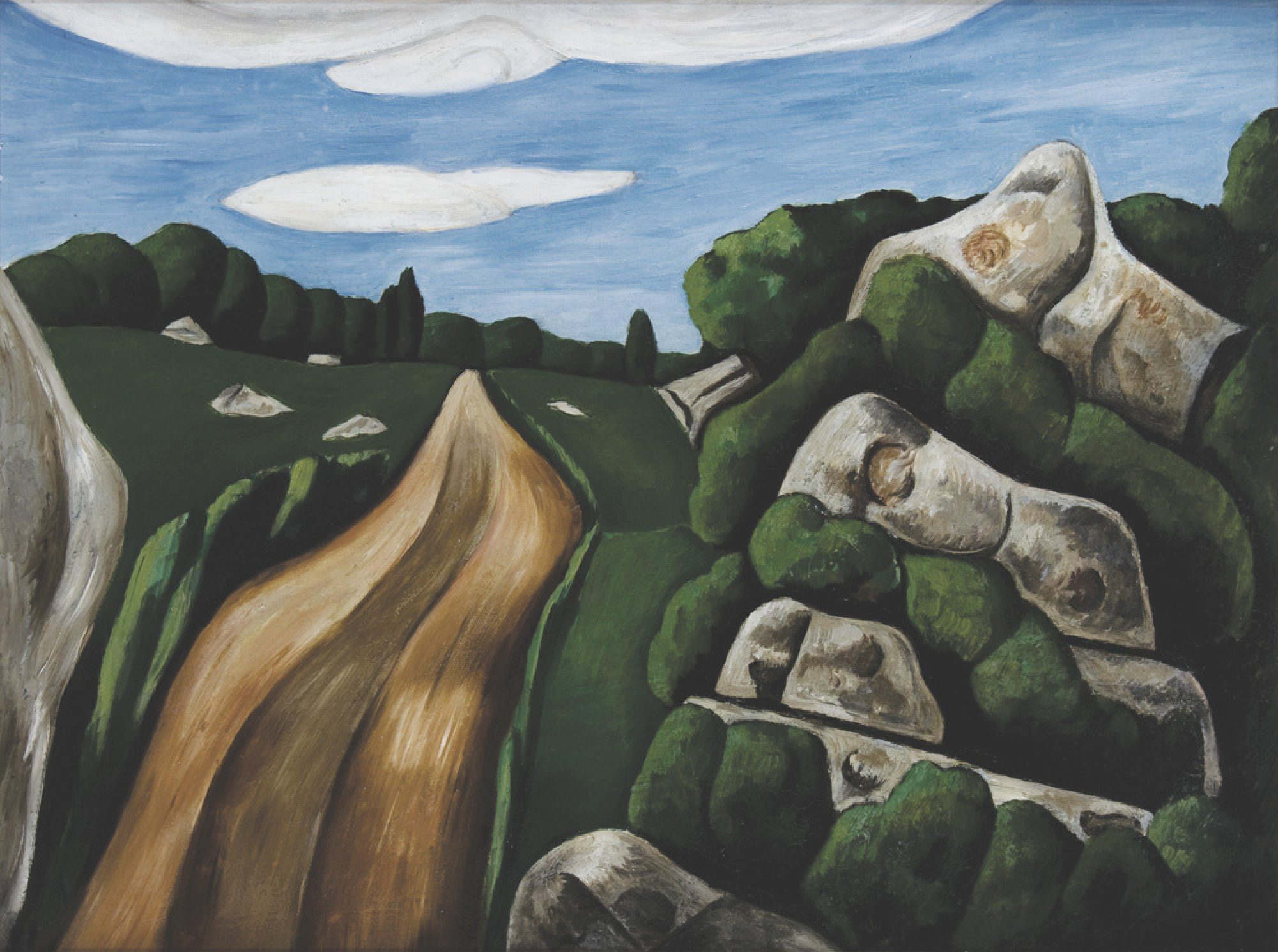Trail Site #11 : Studios of Leonard Craske and Milton Avery, 77-78 Rocky Neck Avenue
DIRECTIONS: Walk past the galleries on the north side of the Rudder Restaurant and turn right on to the pedestrian way, lined with art galleries.
We believe that Craske and Avery had galleries along this walkway.

Number 77 is today a picturesque collection of summer art studios built along a wharf with a restaurant at the far end. The first buildings on the wharf, prior to 1917, were fish houses for the Wonson family business, the Gloucester Salt Fish Company. In the 1920s, as Rocky Neck attracted more and more artists, studios were deliberately constructed. Across Rocky Neck Avenue, at Number 78, the Wonsons, retreating from their maritime businesses, converted West Wharf into residential studios and they also built separate cottages, which have since been demolished. Although we know that many artists regularly rented the studios, we only have records of a few.
In 1926, there is evidence that Leonard Craske and Milton Avery were renting cottages. Leonard Craske, 1878-1950, medical student, actor, sculptor, and photographer, is best known for his iconic sculpture of “The Man at the Wheel”, Gloucester’s Fishermen’s Memorial on Stacy Boulevard on Gloucester harbor. Craske was a Londoner, who graduated from the University of London, and began medical school but did not complete the course. During his college years, he studied drawing and sculpture with distinguished artists. He first worked as an actor, in England and Boston, then put his anatomical training to use as a sculptor. In 1921 he rented a studio in Boston and in 1922 for the first time he rented a summer studio on Rocky Neck. He repeated the pattern for more than twenty years.
In 1922, the city of Gloucester set up a competition for a statue to commemorate the 300th anniversary of the first settlement in 1623. Craske won with a figure of a fisherman at the wheel of a sailing vessel, his interpretation of a painting by Augustus Buhler. The design was cast in bronze by the Gorham Company. The statue was dedicated on August 23, 1925. Craske never made another image as famous as his Fisherman. In the 1920s he was busy with commissions, but when the Depression hit, they dried up and In World War II, the government reserved the nation’s supply of bronze for weapons.
Undaunted, Craske re-invented himself. He had always been interested in photography and spent his time during the 1930s and 40s experimenting with colored films and special effects. He became a well-known lecturer and judge of photographic shows in the Boston area. From 1929 through 1947, Craske was the life of the artistic summer parties on Rocky Neck. He designed and participated in artist parades and skits. Yet he might have died unnoticed in 1950 had it not been for the Man at the Wheel. That single piece of sculpture made him famous.

Milton Avery (1885-1965) the great pioneer of Modernist Art in America, had a very different personality. He was a profoundly private man, whose summer residences in Gloucester and Rockport that are impossible to trace–except by chance in 1926. He came from a family of factory workers in Hartford, Connecticut. He was fascinated by painting and for many years the sole support of a family of women, so his training was mostly by classes at night. given by the Connecticut League of Art Students. He spent his first summer in Gloucester in 1921 when he was still painting in the Impressionist manner. In
1925 he moved to Manhattan to be at the center of the burgeoning art scene. In 1924 he met Sally Michels, who was renting the adjoining studio on Rocky Neck and married her in 1926. From then until his death, Sally supported the family while he painted at home–slowly becoming a master of large areas of color harmonies. He is considered by many critics to be the greatest colorist in American art.

He was the mentor of three young men who became famous after World War II: Barnett Newman, Alfred Gottlieb and Mark Rothko. Their paintings, unlike those of a previous artistic generation, were not of instantly recognizable scenes. The four of them spent many summers during the 1930s and 1940s renting cheap lodgings on Cape Ann but taking absolutely no part in the activities of the summer art colony. Beginning in the 1950s, when all four became recognized, they spent their summers in other areas. Only one piece of Craske’s work is generally known; Avery’s paintings are in the finest art galleries in America.
